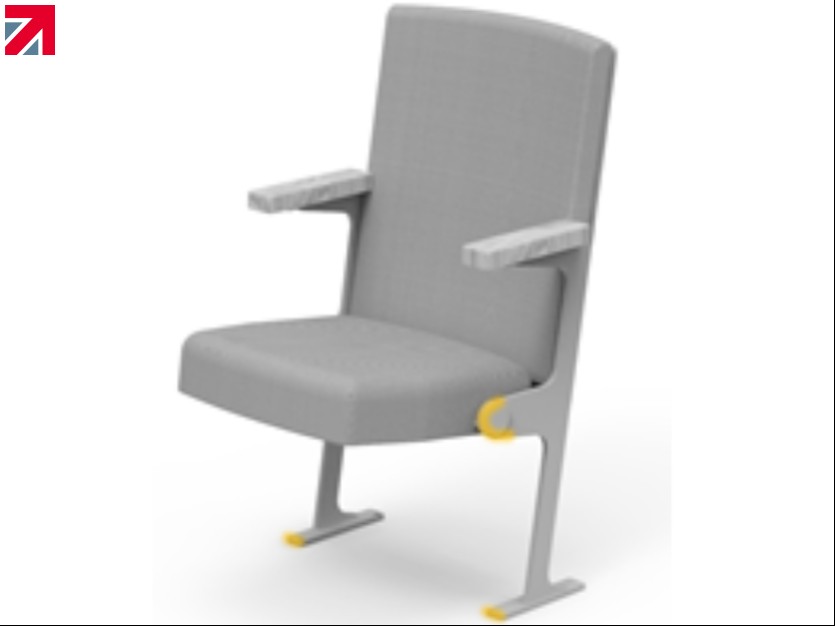The product design stage provides a range of opportunities to improve the sustainability of the seating.
The seating’s ‘end-of-life’ should be considered from the get-go, not as an afterthought. In this instalment of Race Furniture’s Sustainability Series, we will be looking at design for longevity and how considering the lifespan of the product at the design stage can not only save you time and money, but also help to create a more sustainable seating solution.
By considering the lifespan of your seat, you will be thinking about whether they will be able to be repaired and refurbished, which in turn could extend the overall product lifespan. For example, the chair frame (if made from a durable material such as steel) could last 30 years. Whereas the seat and back, typically made of less durable materials, are more likely to have a lifespan of 10-15 years. If these parts can be repaired and refurbished, the life of the chair can be extended.
Considering the design and durability of each individual seating component, reduces the need for refurbishment. For example, consider where the key wearing points of the seat are and how these areas can be reinforced, as explained below. Also, when planning the spares package, be aware that these quick-to-wear parts should be included to ensure you are able to repair more simple components. The key spare chair components advised would be:
- Armrests
- End of row panels
- Back upholstery
- Seat upholstery
Quantities would be dependent on the seating layout and frequency of use; and would be in addition to spare fixings, signage, materials, touch up paint etc.
Upholstery
The upholstered elements of the seating tend to be the first areas to show wear and tear as the fabric is the least durable of the materials and is used in areas of the chair with the most contact and abrasion.
When developing the design of your seating softer edges and corners are more forgiving and will wear slower than sharp edges, especially when the fabric and foam is pulled tight.
Material choice can also assist in improving the durability and therefore lifespan of the chair. Typically, leather is used due to its durability. Today there is the debate about the sustainability of leather due to its resource intensive production. Consider the material, the CO2 footprint of fabrics, the durability, and the end-of-life disposal of each material to find which is most suitable and sustainable for use. On the corners of seating, consider a hardwearing fabric to stop it wearing as quickly. If leather is considered the most appropriate fabric due to it being in a high contact area, could you consider panels of leather, whilst upholstering the rest of the seat in a different fabric to reduce the amount you need?
Upholstery Key Wear Areas:
- Armrests (if upholstered)
- Front edge and corners of seat
- Top edge and corners of backrest
Stained & veneered timbers
Following the upholstery, the next most common area to need replacing are the stained or painted timber components. Armrests or handholds, where the user is commonly making contact with the seating will show wear in the form of fading, scratches or dents in the stain or paintwork.
These parts can be replaced over time; however they still tend to have a longer lifespan than an upholstered alternative. To improve the lifespan further, a solid wood armrest which has only an oil or clear lacquer finish will visually appear newer for longer and can easily be touched up. Unstained solid wood arms may be more costly but will not show wear in the same way stained or painted timber would.
Timber Key Wear Areas:
- Armrests (if stained)
- Top edge and corners of backrest – especially with an upstand (if stained)
Painted metalwork
The metal framework of the seating is the most durable component and will last longest if made from powder-coated steel or similar.
The powder coating is a protective coating that is resistant to scratches and scrapes and so the metalwork can last for years; and if it is kept clean it will likely only need the paintwork touched up. These elements will therefore dictate the total possible lifespan of the furniture.
Metal frame Key Wear Areas:
- Baseplates
- Front edge of frame
- Areas that are damaged during storage and transportation(removable chairs)
Tip: Discuss with your furniture manufacturer which of their product ranges have a longer lifespan, as well as the lifespan variations between ranges to understand the optimum design.
This article was written originally for the Theatre Greenbook Sustainable Buildings Toolkit by our Design & Projects Engineer, Kitty Frost, and Sustainability & Environmental Manager, Sian Berkley.
Discover more about Race Furniture’s Sustainability initiatives
Find out more about Race Furniture Ltd on their member profile page here
Member-created content 3 years ago | From members


